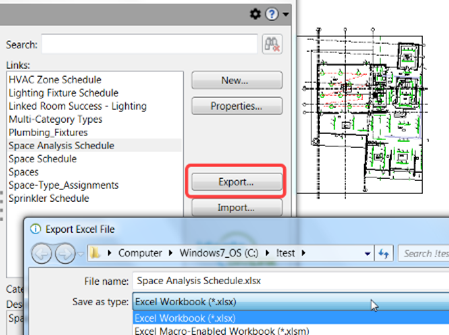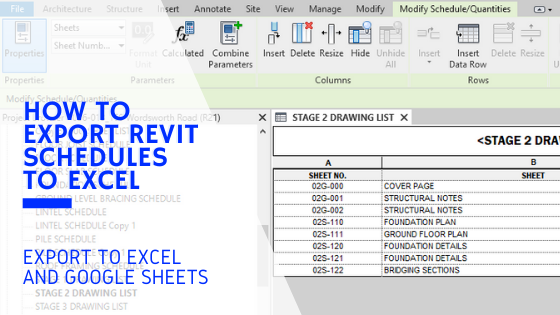Mastering the Art of Information Assimilation: How to Seamlessly Import Excel Data Into Revit
In this short article, we will assist you with the procedure of understanding the art of data integration. Get prepared to prepare your Excel data effortlessly and follow our step-by-step guide to import files into Revit. With our best practices, you'll attain information combination success in no time.
Comprehending the Value of Information Combination in Revit
Comprehending the value of data combination in Revit is vital for smooth importing of Excel files. When you integrate data from Excel right into Revit, it permits you to successfully handle and update information throughout the whole job. This integration ensures that your design and building procedure is current and exact.
By integrating data, you can conveniently import and upgrade parameters, timetables, and also geometry in Revit. This removes the requirement for manual information entrance, saving you time and lowering the danger of errors. With Revit's data integration capacities, you can preserve consistency and precision in your project, while additionally enhancing collaboration amongst employee.

Checking Out the Excel Data Format for Revit Integration

In order to effectively incorporate Excel files right into Revit, it is important to ensure that the data is formatted appropriately. This includes appropriately classifying rows and columns, as well as structuring the information in such a way that is suitable with Revit's data schema. Revit makes use of particular criteria and classifications to organize information, so it is necessary to straighten the Excel data with these criteria to guarantee a smooth assimilation.
Additionally, it is essential to note that Revit just supports particular data kinds when importing from Excel. These consist of text, numbers, and days. Any various other information kinds, such as formulas or conditional formatting, will certainly not be recognized by Revit and import excel into revit might create problems throughout the integration procedure.
Preparing Your Excel Information for Seamless Import Into Revit
To make certain a smooth combination process, you'll require to properly style and label the columns and rows in your Excel data before importing it into Revit. Begin by examining your Excel data and determining which rows and columns consist of pertinent details for your Revit job.
Following, make certain that the information in each column is effectively formatted. If you have a column for dimensions, make sure that all dimensions are constantly formatted in the exact same systems of measurement. Revit relies upon consistent formatting to properly analyze and import information.
Furthermore, it is necessary to look for any vacant cells or disparities in your data. Revit might not have the ability to check out or import data from cells that are vacant or have mistakes. For that reason, it is recommended to review your Excel information and clean up any variances before importing it into Revit.
Step-By-Step Guide to Importing Excel Files Into Revit
Once you have actually correctly formatted and classified your Excel data, you can conveniently import it into Revit by following this step-by-step overview. To start, open Revit and navigate to the "Insert" tab. revit tools.
Next, a dialog box will show up, allowing you to tailor the import settings. Right here, you can pick the worksheet you wish to import, define the variety of cells to import, and select the proper devices for your data. When you have actually made your selections, click "OK" to proceed.
Revit will certainly now show a sneak peek of your Excel information. Take a moment to examine the preview and ensure that everything looks right. If required, you can make adjustments to the import settings by clicking on the "Setups" switch.
Best Practices for Data Combination Success in Revit
Make certain you follow these finest techniques to guarantee effective combination of data in Revit. It is essential to organize your information in Excel prior to importing it right into Revit. Be conscious of the systems and information types when mapping the data, as any kind of disparities can lead to mistakes in the combination process.
One more essential technique is to on a regular basis validate and upgrade your information. Furthermore, make use of information validation devices within Revit to identify any type of errors go right here or variances in the integrated information.
Lastly, it is suggested to develop a clear process for information Bonuses assimilation. This includes specifying roles and duties, establishing a communication network between team participants, and establishing a routine cadence for data updates and testimonials. By following these finest techniques, you can guarantee a successful and seamless assimilation of data in Revit, eventually boosting the efficiency and accuracy of your job.
Verdict
In conclusion, mastering the art of data integration is essential for seamless import of Excel files into Revit. Recognizing the relevance of data integration in Revit is the initial action in the direction of effective combination.
When importing data from Excel into Revit, it is important to understand the documents layout and exactly how it can impact the integration procedure (revit tools). Revit utilizes particular parameters and groups to arrange data, so it is important to align the Excel information with these specifications to guarantee a seamless assimilation
Be mindful of the units and data kinds when mapping the data, as any kind of disparities can lead to errors in the integration procedure.
Additionally, make usage of information validation devices within Revit to determine any mistakes or incongruities in the incorporated data.
